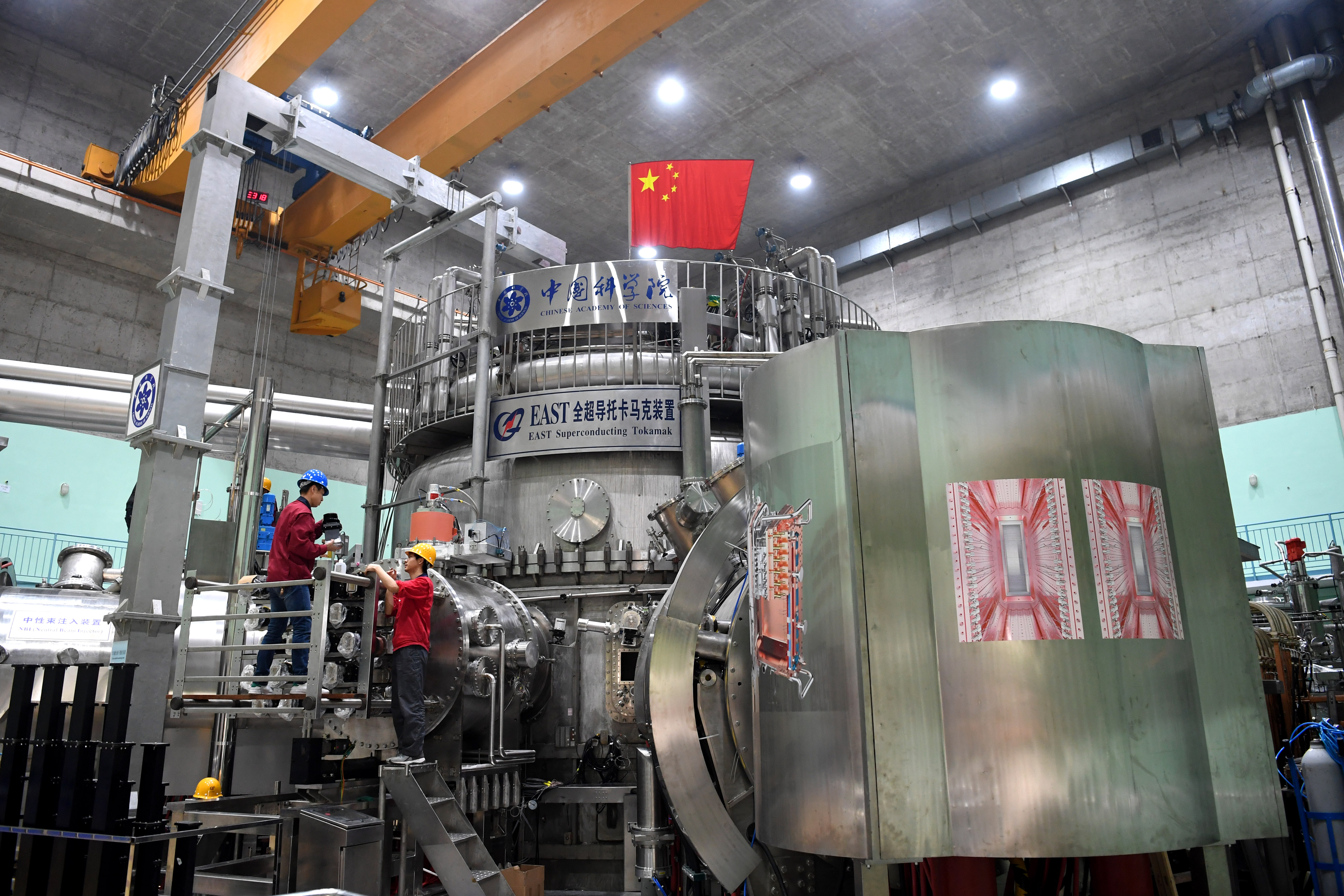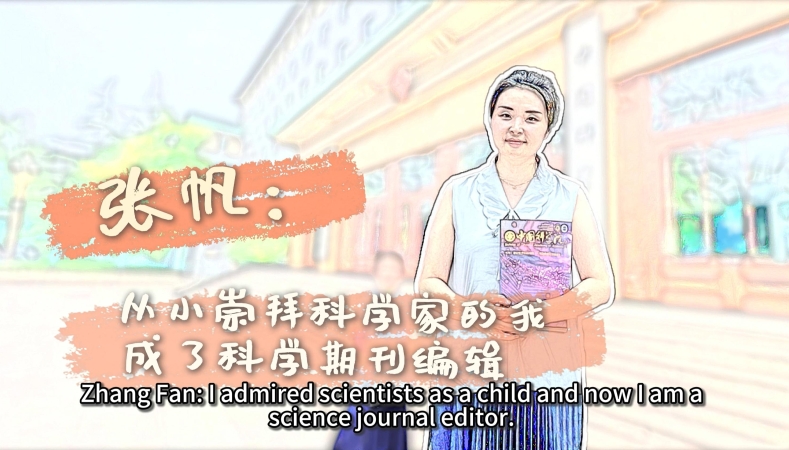China's 'Artificial Sun' to Provide Sustainable Clean Energy
Devices of Experimental Advanced Superconducting Tokamak. (PHOTO: XINHUA)
By QI Liming
Chinese scientists have set a new world record of achieving a plasma temperature of 120 million degrees Celsius for 101 seconds, a major step toward test running a fusion reactor. The experiment, that took place in May at the Experimental Advanced Superconducting Tokamak (EAST), namely the China's "artificial sun," also realized a plasma temperature of 160 million degrees Celsius, lasting for 20 seconds.
Fusion energy--the ultimate energy
Gong Xianzu, a researcher at the Institute of Plasma Physics of the Chinese Academy of Sciences (ASIPP), who is also in charge of the EAST experiment in Hefei city, said that the ultimate goal of EAST is to create nuclear fusion like the Sun, using deuterium (heavy hydrogen), found in abundance in the oceans, to provide a steady stream of clean energy.
It is estimated that through fusion reaction, the deuterium in one liter of seawater can produce the amount of energy equivalent to 300 liters of gasoline.
Unlike fossil fuels such as coal, oil and natural gas, which are in danger of being exhausted and pose a threat to the environment, raw materials required for the "artificial sun" are almost unlimited on earth. Therefore, fusion energy is considered the ideal "ultimate energy" with the potential to help China realize carbon neutrality.
Around 300 scientists and engineers mobilized to support the operation of the doughnut-shaped experiment facility, which includes a vacuum system, RF wave system, laser scattering system, and microwave system. Preparation and upgrading work for the experiment started about a year ago, the Institute said.
"It is a huge achievement in China's physics and engineering fields. The experiment's success lays the foundation for China to build its own nuclear fusion energy station," said Song Yuntao, director of ASIPP.
Nuclear fusion vs nuclear fission
The EAST device is designed to replicate the nuclear fusion process carried out by the sun and stars. Nuclear fusion is a process through which high levels of energy are produced without generating large quantities of waste. Previously, energy was produced through nuclear fission, a process in which the nucleus of a heavy atom was split into two or more nuclei of lighter atoms.
Fission is an easier process to carry out, however it generates far more nuclear waste. Unlike fission, fusion does not emit greenhouse gases and is considered a safer process with lower risk of accidents. Once mastered, nuclear fusion could potentially provide unlimited clean energy at very low costs.
For nuclear fusion to occur, tremendous heat and pressure are applied on hydrogen atoms so that they fuse together. The nuclei of deuterium and tritium, both found in hydrogen, are made to fuse together to create a helium nucleus, a neutron along with a mass of energy.
Media responses
U.S. Atlantic Media said although fusion technology is still in its infancy, the implications of this research, and this latest breakthrough by China's indigenously designed and built device are immense.
The countries that can develop and wield this technology have the potential to see massive windfalls in terms of reliable and renewable energy, and can reduce vulnerability that comes with it. At present, China's fusion research is heating up.
Australian Science Alert commented that fusion power is considered the holy grail of clean energy and nuclear fusion is a great pursuit for a future post-carbon society.
India Express said that it is undoubted that the EAST reactor is an advanced Chinese nuclear fusion experimental research device, and since it first became operational in 2006, it has set several records for the duration of confinement of exceedingly hot plasma.
EAST is one of three major domestic tokamaks that are presently being operated across the country. China is also currently operating the HL-2M reactor, as well as J-TEXT. In December 2020, HL-2M Tokamak, China's largest and most advanced nuclear fusion experimental research device, was successfully powered up for the first time, a key milestone in the growth of China's nuclear power research capabilities.
The experiment of EAST is also a part of the International Thermonuclear Experimental Reactor (ITER) facility, a global science project second only to the International Space Station in size, which is being jointly constructed by China, the EU, India, Japan, South Korea, Russia and the U.S. Its success is significant to future peaceful and sustainable utilization of international nuclear fusion. China devotes around 9 percent of its R&D funds.


